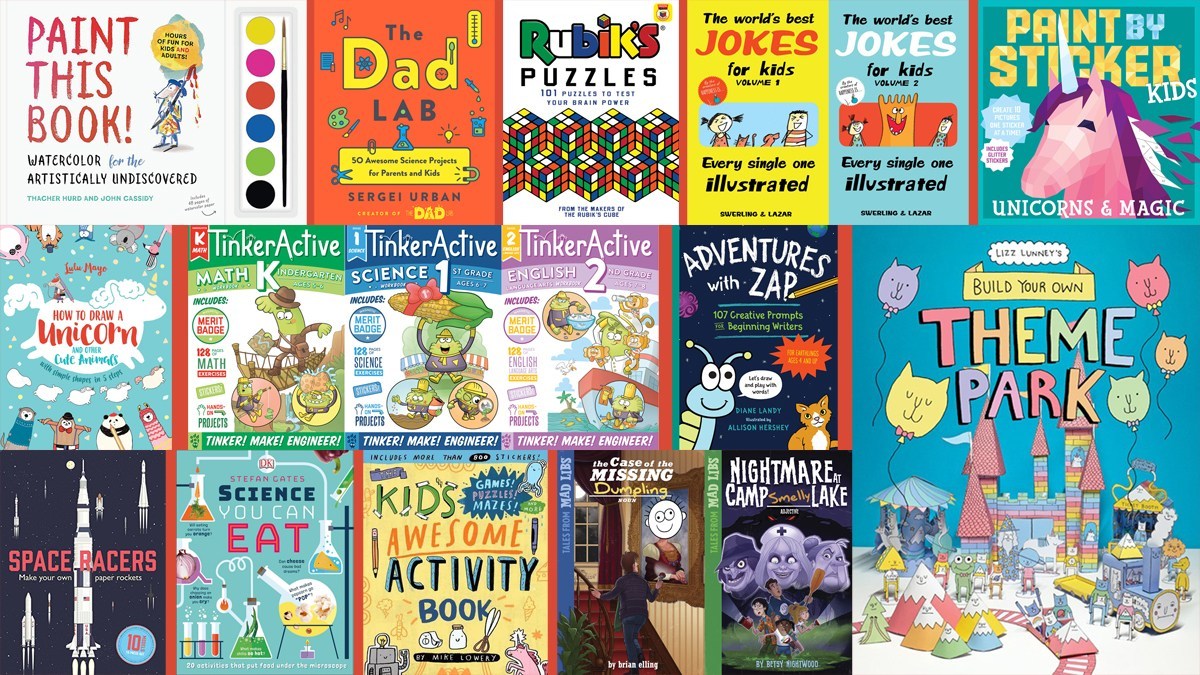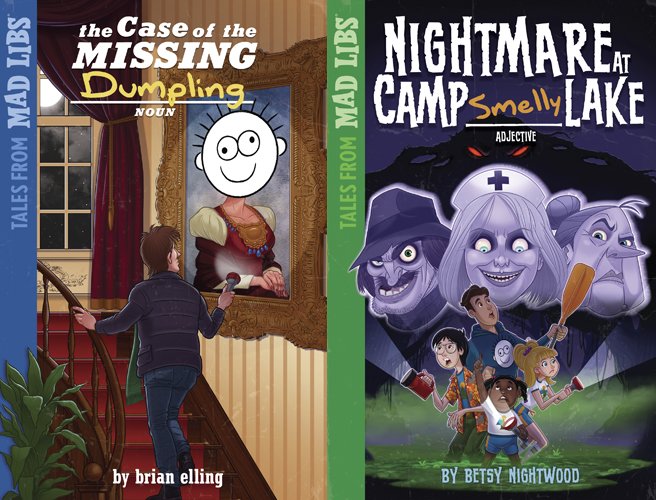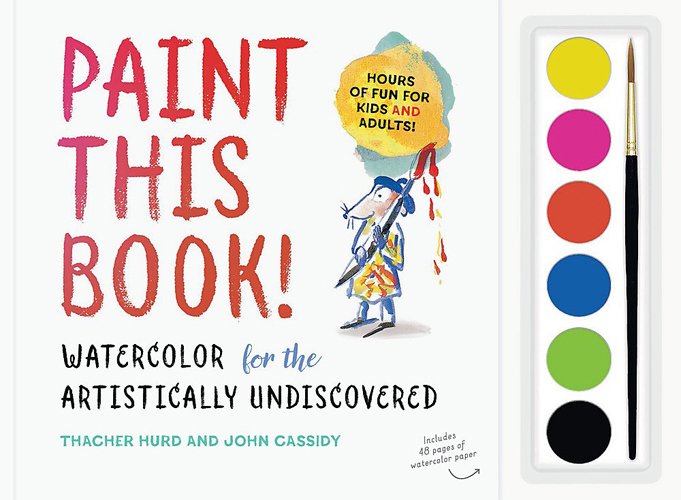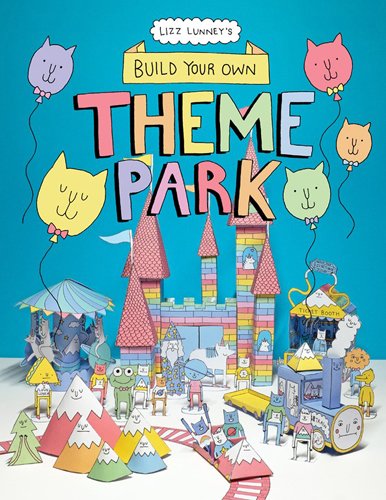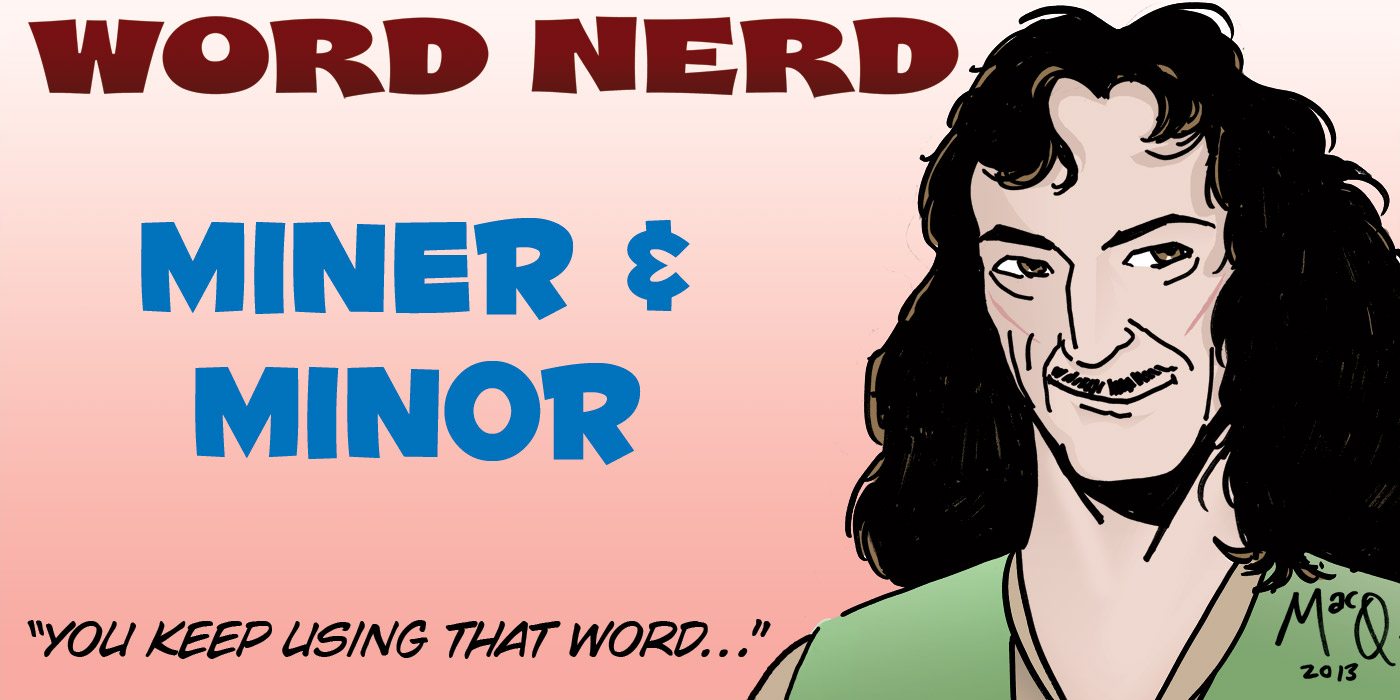Summer is here! We always have a big box of activity books in the house—admittedly, sometimes a bit too many—so it’s easy for the kids to grab one when they’re looking for something to do, whether that’s at home or on a long car ride. Here’s a stack of books that’ll keep your kids entertained and (in some cases) educated!
Adventures with Zap: 107 Creative Prompts for Beginning Writers by Diane Landy, illustrated by Allison Hershey
This workbook, suitable for ages 4 and up, presents lots of different writing prompts, and then space for kids to write (or draw!) their answers. The instructions explain how the book can work for kids at varying levels of ability: they may need a helper to read or write for them, or they might be in the beginning stages of writing on their own and just sounding things out. If they’re already writing, the book gives just a few tips on editing to make their stories even better.
The book is narrated by an alien named Zap, who suggests various scenarios: pretend you have a spaceship, and think about what you’d pack for an adventure. Then draw what you would see if you flew over your home on your way into space. Pretend to have a conversation with Zap on the phone. Pretend you have a superpower—what is it, and what do you do with it?
Throughout the book, there are panels that illustrate an ongoing story featuring Zap, with the various prompts tied to Zap’s story. The book mixes up prompts for drawings, lists, and full-on sentences, along with little exercises that focus on specific aspects of writing, from brainstorming ideas to proofreading. My youngest daughter (who just finished kindergarten) has been noodling her way through this book, skipping around and just filling in the parts that she felt ready for, and it’s fun to see the ideas she comes up with.
Tales From Mad Libs: The Case of the Missing [Dumpling] by Brian Elling
Tales From Mad Libs: Nightmare at Camp [Smelly] Lake by Betsy Nightwood
You’re probably familiar with Mad Libs—I did a lot of them as a kid myself. There’s a [adjective] story with a bunch of blanks, and you [verb] them in with nouns, adjectives, verbs, adverbs, and so on, and then at the end you read the [noun] and it’s very [adjective]. Well, these Tales From Mad Libs take that old idea and turn them into chapter books—each chapter is a single page like the classic Mad Libs, but then they tell an overarching narrative.
In The Case of the Missing Dumpling, you’ve responded to a newspaper ad about a dog-walker job, only to find that the rich widow Ms. Imma Gonnagetsit has been robbed! You find her unconscious, and her necklace is gone—and now you’re one of the suspects! Nightmare at Camp Smelly Lake is about a couple of kids at a summer camp, where some really strange things have been happening. There are stories about kids who vanished, and there’s something not quite right about the Safety Squad… If your kids like Mad Libs, this is a great way to make a longer story instead of just little short bits.
The Kid’s Awesome Activity Book by Mike Lowery
Mike Lowery has illustrated many kids’ books (including the Mac B., Kid Spy series), and he’s also created a couple of activity books, including the Doodle Adventures series, in which kids are asked to draw various things to contribute to the story. The Kid’s Awesome Activity Book is more of a traditional activity book in that there’s no narrative—it’s just a whole lot of different things to do. But it’s not traditional like the old activity books I had when I was a kid: a couple coloring pages, a word search or two, and some mazes. This one does have those types of activities (as well as spot-the-differences, word scrambles, dot-to-dots, and picture searches), but it also includes things like comics that you get to complete, crafts to punch out and make, piles of stickers, and more. My daughter has really enjoyed this one—there are lots of filled in pages, and I like the way that the various drawing prompts encourage a bit of creative thinking.
Paint This Book! Watercolor for the Artistically Undiscovered by Thacher Hurd and John Cassidy
I’ll admit: this is one of those activity books that we haven’t gotten around to yet, but I’ve kept it because my teenager reserved it for future use, once she’s finished with all the other things she wants to do. The book itself is spiral-bound so that the pages lie flat, with a built-in set of watercolor paints and small paintbrush. The introduction notes that these are a higher quality than the usual cheap watercolor sets you get for kids, and it’s the same color palette that was used in the illustrations throughout the book.
Many of the pages in the book are watercolor paper, usually with some instructions and a few samples printed on them. They introduce basic techniques and exercises—getting used to the brush, mixing colors, splattering, color combinations, and more. Some of the techniques are specific to watercolor, and some are more general practices like perspective and composition, but even just reading through the book is really fascinating and taught me some things about watercolor painting that I didn’t know before.
How to Draw a Unicorn and Other Cute Animals by Lulu Mayo
You know those drawing books where you start by drawing a lot of ovals and then some connecting lines, and then you “add detail” and you have a photorealistic horse? This is not one of those. The cute animals you learn to draw from this book may not be anatomically correct, but you actually do draw them “with simple shapes in 5 steps,” as the cover claims. Each two-page spread features a different animal: cats and dogs, sure, but also koala bears, sloths, anteaters, and otters. There are thirty animals in all, and each also includes a page in the book to practice. Many of the drawing pages have some of the simple shapes pre-printed very lightly, with suggestions about how to mix things up a little so that you’re not just making an exact copy of the one in the lesson.
Rubik’s Puzzles by Tim Dedopulos
This book of 101 puzzles is inspired by the Rubik’s Cube, but doesn’t actually require a cube. Instead, these are logic puzzles that use various colored grids: mazes, pattern finding, and so on. Some puzzles show a cube template and ask which cube couldn’t be made using that template. Some challenge you to fill in a grid based on some specific criteria. They’re fun for anyone who loves puzzles, but may have a particular appeal for fans of the Rubik’s Cube. The one caveat is that there are some pages where the orange and red are a little hard to distinguish.
TinkerActive series from Odd Dot
A couple years ago I shared that my youngest daughter had fallen in love with the Summer Brain Quest books from Workman Publishing (and she has another one that she’s started on this year, too). This year, we’ve also got another set of educational workbooks: TinkerActive. These are available for kindergarten through 2nd grade, in math, science, and English. They teach kids various concepts and have workbook pages to practice (like using alligator mouths to learn “greater than” and “less than”), but there’s also a focus on hands-on projects that go beyond filling out a page in a book. For instance, in the 1st grade math book, there’s an activity to make paddles to play with a balloon, but the scoring involves some simple addition and subtraction. In the science book, the section about vertebrates has you build a skeleton out of dry pasta, and then build onto it with cotton balls and other materials.
Each activity shows the materials you’ll need to gather. Then there’s a “Let’s Tinker!” that’s a bit of an activity that just gets you thinking about the subject matter. Then the “Let’s Make!” section is a craft of some sort related to the topic. Finally, there’s a “Let’s Engineer!” that encourages a little more creative thinking and problem-solving.
The back of each book includes a sticker sheet—some stickers are used in the various activities, but there’s also a sticker chart to fill out as you complete projects. And, finally, there’s a magnetic “merit badge” that’s tucked away in the back cover that kids can earn when they complete the book. We’ve gotten copies of the 1st grade science and math books to try out. The activities do require a little more parental supervision, but I like the way that they go beyond just abstract concepts, because the lessons will stick better with the hands-on experiences.
Build Your Own Theme Park by Lizz Lunney
This one’s for kids who love papercraft: cut, fold, and glue (or tape) together this miniature theme park, with a roller coaster, castle, carousel, and a little train—plus lots of little people to populate it! My kids have just gotten started and built the ticket booth so far, but I expect by the end of summer the coffee table will be a complete theme park. The back of the book includes a little cartoon that encourages kids to use this as a jumping-off point to designing and creating their own theme park.
Space Racers by Isabel Thomas
Speaking of papercraft, this kit lets you punch out and assemble 10 paper rockets. Particularly noteworthy is the Saturn V rocket, since we’re celebrating the 50th anniversary of the moon landing this summer, but the kit also includes the Space Shuttle system, the Soyuz-FG, and two blank rockets for you to design your own. You’ll need some glue, but the pieces are all pre-punched. There’s also a booklet of rocket facts, so you can learn about the models you’re building.
The Dad Lab by Sergei Urban
When it comes to fun activities for parents to do with their kids, we are, of course, partial to the GeekDad books. But that doesn’t mean there aren’t some other great options out there. The Dad Lab book is by Sergei Urban, who also has a website and YouTube channel about creating things and doing experiments with his kids. This book is focused on science experiments, learning about topics from inertia to magnetism to siphons to sound waves. The projects are mostly pretty simple and don’t require a lot of specialized equipment, but are a lot of fun and can bring a sense of wonder to your kids. Each one explains what’s going on and how it works, along with a “Why Not Try…” section for further exploration.
Science You Can Eat by Stefan Gates
My 6-year-old just asked me recently why onions make you cry (and why other vegetables don’t) and I had to admit that I wasn’t really sure, but that we could look it up. And we did—in this book! This book about the science of food includes some activities to do, but also just a lot of fun facts. GeekDad Robin Brooks took a deeper dive into this book earlier this month—check it out!
Paint by Sticker Kids: Unicorns & Magic from Workman Publishing
My whole family is fond of these sticker-picture books. A couple years ago we tried out the Animetrics book from Barron’s, and last year we got the Paint by Sticker Kids: Beautiful Bugs, which is similar but with smaller images. This latest volume in the series features unicorns and other fairy tale images: a mermaid, a dragon, a phoenix, and so on. My youngest daughter completed about half of these on her own just since school got out last week, so we may need to get a few more soon!
The World’s Best Jokes for Kids by Lisa Swerling & Ralph Lazar
What do you call an elephant that doesn’t matter?
An irrelephant.
You’ll find this joke, and hundreds more, in these two volumes of silly jokes and riddles, accompanied by little cartoons. My six-year-old absolutely adores these and has read them several times over: sometimes out loud to us, and sometimes just to herself, giggling the whole time. If your kids love puns—or if you just need to expose your kids to more puns in an attempt to make them love puns—then you should get these books!
Disclosure: I received review copies of these books.
